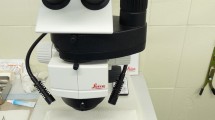Summary
Tick-borne relapsing fever (RF) and Lyme disease (LD) are spirochetal infections of humans caused by different Borrelia species in endemic areas throughout the world. Our laboratory is studying the response of mammalian hosts to borrelia infection in RF and LD. For this, we use mice and non-human primates infected with B. burgdorferi sensu stricto strain N40 (N40) and the Oz1 strain of Borrelia turicatae (Bt), agents of LD and RF in North America, respectively. Our results have revealed that outbred non-human primates are significantly less susceptible than outbred mice to persistent infection with N40. In contrast, the majority of mice inoculated with the RF agent B. turicatae clear the infection, with the notable exception of residual brain or blood infection in up to 25% of cases. Little if any tissue injury occurs in immunocompetent animals with either LD or RF. In contrast, impairment of specific antibody production results in significant tissue injury, most notably in the heart, in both LD and RF. The inflammatory infiltrate is rich in plasma cells, activated macrophages and T cells, and there is significant deposition of antibody and complement, including membrane attack complex, in inflamed tissues and spirochetes. Significant loss of cardiomyocytes with apoptosis and caspase activation was observed in the heart of immunosuppressed non-human primates infected with N40 and in B cell-deficient mice infected with B. turicatae. Unlike the heart, the brain of B cell-deficient mice infected with B. turicatae showed prominent microglial activation but no detectable tissue injury. Tissues from immunosuppressed non-human primates infected with N40 produce large amounts of immunoglobulin and the B cell chemokine CXCL13, both of which significantly correlate with the spirochetal load. We conclude that the main response of mammalian hosts in LD and RF is the production of specific antibody to clear the infection. Failure of this response leads to persistent infection, which can lead to tissue injury, most notably in the heart.
Similar content being viewed by others
References
Bai Y, Narayan K, Dail D, Sondey M, Hodzic E, Barthold SW, Pachner AR, Cadavid D (2004) Spinal cord involvement in the nonhuman primate model of Lyme disease. Lab Invest 84 (2): 160–172
Barbour AG, Hayes SF (1986) Biology of Borrelia species. Microbiol Rev 50 (4): 381–400
Barthold SW, de Souza MS, Janotka JL, Smith AL, Persing DH (1993) Chronic Lyme borreliosis in the laboratory mouse. Am J Pathol 143 (3): 959–971
Cadavid D, Bai Y, Dail D, Hurd M, Narayan K, Hodzic E, Barthold SW, Pachner AR (2003) Infection and inflammation in skeletal muscle from nonhuman primates infected with different genospecies of the Lyme disease spirochete Borrelia burgdorferi. Infect Immun 71 (12): 7087–7098
Cadavid D, Bai Y, Hodzic E, Narayan K, Barthold SW, Pachner AR (2004) Cardiac involvement in non-human primates infected with the Lyme disease spirochete Borrelia burgdorferi. Lab Invest 84 (11): 1439–1450
Cadavid D, Barbour AG (1998) Neuroborreliosis during relapsing fever: review of the clinical manifestations, pathology, and treatment of infections in humans and experimental animals. Clin Infect Dis 26 (1): 151–164
Cadavid D, Bundoc V, Barbour AG (1993) Experimental infection of the mouse brain by a relapsing fever Borrelia species: a molecular analysis. J Infect Dis 168 (1): 143–151
Cadavid D, O'Neill T, Schaefer H, Pachner AR (2000) Localization of Borrelia burgdorferi in the nervous system and other organs in a nonhuman primate model of lyme disease. Lab Invest 80 (7): 1043–1054
Cadavid D, Pennington PM, Kerentseva TA, Bergstrom S, Barbour AG (1997) Immunologic and genetic analyses of VmpA of a neurotropic strain of Borrelia turicatae. Infect Immun 65 (8): 3352–3360
Cadavid D, Sondey M, Garcia E, Lawson CL (2006) Residual brain infection in relapsing fever borreliosis. J Infect Dis (in press)
Cadavid D, Thomas DD, Crawley R, Barbour AG (1994) Variability of a bacterial surface protein and disease expression in a possible mouse model of systemic Lyme borreliosis. J Exp Med 179 (2): 631–642
Frank SA, Barbour AG (2006) Within-host dynamics of antigenic variation. Infect Genet Evol 6: 141–146
Londono D, Bai Y, Zuckert WR, Gelderblom H, Cadavid D (2005) Cardiac apoptosis in severe relapsing fever borreliosis. Infect Immun 73 (11): 7669–7676
Narayan K, Dail D, Li L, Cadavid D, Amrute S, Fitzgerald-Bocarsly P, Pachner AR (2005) The nervous system as ectopic germinal center: CXCL13 and IgG in lyme neuroborreliosis. Ann Neurol 57 (6): 813–823
Pachner AR, Cadavid D, Shu G, Dail D, Pachner S, Hodzic E, Barthold SW (2001) Central and peripheral nervous system infection, immunity, and inflammation in the NHP model of Lyme borreliosis. Ann Neurol 50 (3): 330–338
Pachner AR, Dail D, Bai Y, Sondey M, Pak L, Narayan K, Cadavid D (2004) Genotype determines phenotype in experimental Lyme borreliosis. Ann Neurol 56 (3): 361–370
Pachner AR, Dail D, Li L, Gurey L, Feng S, Hodzic E, Barthold S (2002) Humoral immune response associated with Lyme borreliosis in nonhuman primates: analysis by immunoblotting and enzyme-linked immunosorbent assay with sonicates or recombinant proteins. Clin Diagn Lab Immunol 9 (6): 1348–1355
Pachner AR, Dail D, Narayan K, Dutta K, Cadavid D (2002) Increased expression of B-lymphocyte chemoattractant, but not pro-inflammatory cytokines, in muscle tissue in rhesus chronic Lyme borreliosis. Cytokine 19 (6): 297–307
Pennington PM, Cadavid D, Barbour AG (1999) Characterization of VspB of Borrelia turicatae, a major outer membrane protein expressed in blood and tissues of mice. Infect Immun 67 (9): 4637–4645
Pennington PM, Cadavid D, Bunikis J, Norris SJ, Barbour AG (1999) Extensive interplasmidic duplications change the virulence phenotype of the relapsing fever agent Borrelia turicatae [in process citation]. Mol Microbiol 34 (5): 1120–1132
Author information
Authors and Affiliations
Corresponding author
Rights and permissions
About this article
Cite this article
Cadavid, D. The mammalian host response to borrelia infection. Wien Klin Wochenschr 118, 653–658 (2006). https://doi.org/10.1007/s00508-006-0692-0
Issue Date:
DOI: https://doi.org/10.1007/s00508-006-0692-0




